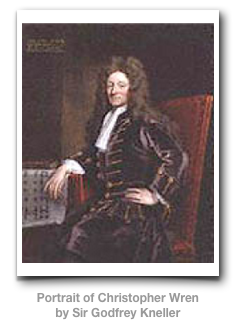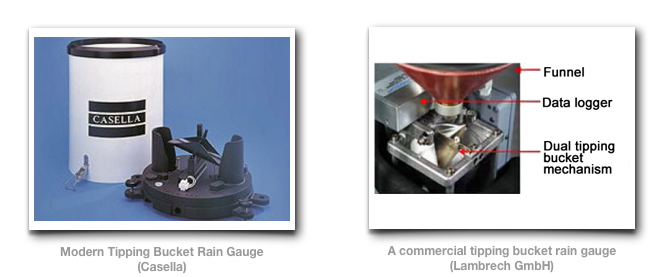Historical background
Rain has always been an important factor for those communities that rely on rainwater and water in general for their livelihood, such as gardeners and farmers. In ancient times, the amount of rain was important to know how moist the soils were and from this they could estimate how good their crops would be. Too little or too much rain, crops would fail — no crops, no food! Earliest measurements were no more than bowls left out for a period of time to see how much they filled.
Rainfall measurements were found in ancient Chinese government records as early as the Chou dynasty, more than 3,000 years ago. Records have also been found in Greece and India at about 400 to 500 B.C. The best records in pre-modern times however, were kept in Korea. King Sejong wanted to improve agricultural technology and his son, who was to become King Munjong, invented a rain gauge in the 1400s. A rain gauge was sent to each village and used to assess the village’s potential harvest from the rainfall, which in turn determined how much the village should be taxed.
Early modern rain gauges were called a pluviometers, which comes from the Latin pluvia, which means rain. At around the 1660, the great British architect and designer, Sir Christopher Wren, devised an instrument to measure small amounts of rainwater by using standard weights to determine how much rain was collected. However, Reverend Horsley of Great Britain was credited as being the inventor of the modern rain gauge in 1722, which also set the standard for rain gauges used today.
Types of rain gauges

Ordinary rain gauge
The most common rain gauge is the ordinary rain gauge, which simply consists of a collector place above a funnel that leads into measuring cylinder, where the rainwater is stored between observations. The measuring cylinder is specially graded to give the rainfall measurement in mm. Alternatively, where rainfall can be particularly heavy, a large container is used to collect the rainwater. Readings are made by pouring the rainwater out of the container into measuring cylinder so that the rainfall could be measured.
Automated rain gauge
Tipping bucket rain gauge

The tipping bucket rain gauge stemmed from the technique used by Sir Christopher Wren in his rain gauge invention of 1662. His device used small buckets that held specific amount of rainwater and counter balanced by small standard weights. When the bucket was full, it would unbalance the counterweight and tip over. The tipping action not only empties the rainwater from the bucket but also triggers a mechanism to punch holes onto a paper tape. The number of holes punched is proportional to the amount of rainwater collected by the small bucket.
The modern tipping bucket rain gauge uses electronic means to record the number of times the bucket tips rather than paper tape. All tipping bucket rain gauges today has two small specially designed buckets to collect the rainwater. The buckets are chosen to hold specific amounts of rainwater before they tip, typically 0.1, 0.2 or 0.5 mm of rainwater. When one bucket tips, the other bucket quickly moves into place to catch the next amount of rainwater. Each time a bucket tips, an electronic signal is sent to a recorder, which also records the time the bucket tipped. This way, the instrument could not only record how much rain has fallen but also when rain started, ended or how much rain over any period of time without having anyone at the site. Most tipping bucket rain gauges today drains the water out of the bottom so it does not require manual emptying making it ideal for automated systems.

The weighing rain gauge
Another way of determining how much rainwater has been collected is to weigh the water inside the container. In these instruments, the container sits on top of a scale and this weighs the container together with the rainwater inside continuously. The scales may be adjusted for the container making the reading to be only the collected rainwater. The measurements are usually recorded onto charts by pen and ink but later systems uses digital scales that could record the measurements electronically. Typically, this type of rain gauge does not empty itself and requires routine attention.